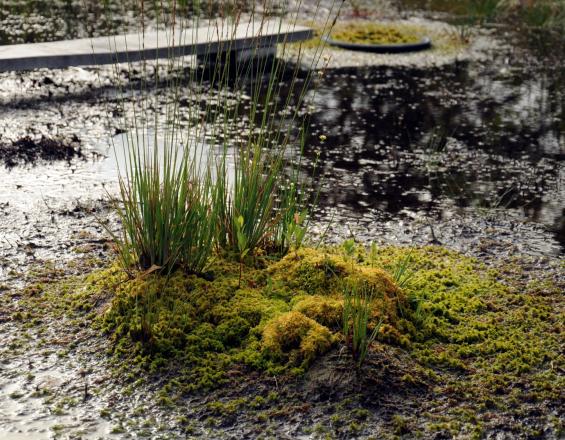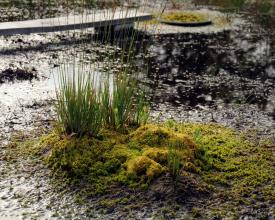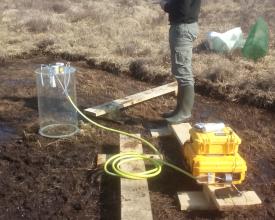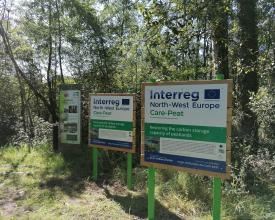
Stimulating carbon storage in disturbed French temperate peatlands

Lowland French peatlands are probably all disturbed in one way or another. Most of the time, the water table level was affected through drainage or infrastructure (e. g. road ditches). The result is an increase in the percentage cover of common species that do not favour C storage and biodiversity, such as Molinia caerulea, ericaceous shrubs or Carex paniculata. The dominance of these species occurs at the expense of sphagnum species, which are known as ecosystem engineer through their capacity to promote carbon storage in the form of peat. To tackle this issue, restoration actions were undertaken in two pilot sites in the framework of the Interreg NW Europe Care-Peat project: La Guette peatland (Loire Valley region) and Landemarais peatland (Brittany). First, the common vegetation and the first 10 cm of peat were stripped to get rid of this vegetation and its seed banks. Then, sphagnum was harvested extensively and gathered to form a patch. In this way, the method is both inexpensive and as less destructive as possible
Context
Challenges addressed
Location
Impacts
The sphagnum patches are the starting points from which sphagnum lawns are expected to develop. This should initiate a new durable peat layer that, in the long term, should store significant amount of carbon into the soil in the form of peat. In addition, such an action should promote biodiversity. To assess the impacts, different variables are monitored such as greenhouse gas fluxes and water table depths. Also, peat cores are taken to assess the carbon stock.




